Deletion of PRKAA triggers mitochondrial fission by inhibiting the autophagy-dependent degradation of DNM1L
- PMID: 28085543
- PMCID: PMC5324848
- DOI: 10.1080/15548627.2016.1263776
Deletion of PRKAA triggers mitochondrial fission by inhibiting the autophagy-dependent degradation of DNM1L
Abstract
PRKAA (protein kinase, AMP-activated, α catalytic subunit) regulates mitochondrial biogenesis, function, and turnover. However, the molecular mechanisms by which PRKAA regulates mitochondrial dynamics remain poorly characterized. Here, we report that PRKAA regulated mitochondrial fission via the autophagy-dependent degradation of DNM1L (dynamin 1-like). Deletion of Prkaa1/AMPKα1 or Prkaa2/AMPKα2 resulted in defective autophagy, DNM1L accumulation, and aberrant mitochondrial fragmentation in the mouse aortic endothelium. Furthermore, autophagy inhibition by chloroquine treatment or ATG7 small interfering RNA (siRNA) transfection, upregulated DNM1L expression and triggered DNM1L-mediated mitochondrial fragmentation. In contrast, autophagy activation by overexpression of ATG7 or chronic administration of rapamycin, the MTOR inhibitor, promoted DNM1L degradation and attenuated mitochondrial fragmentation in Prkaa2-deficient (prkaa2-/-) mice, suggesting that defective autophagy contributes to enhanced DNM1L expression and mitochondrial fragmentation. Additionally, the autophagic receptor protein SQSTM1/p62, which bound to DNM1L and led to its translocation into the autophagosome, was involved in DNM1L degradation by the autophagy-lysosome pathway. Gene silencing of SQSTM1 markedly reduced the association between SQSTM1 and DNM1L, impaired the degradation of DNM1L, and enhanced mitochondrial fragmentation in PRKAA-deficient endothelial cells. Finally, the genetic (DNM1L siRNA) or pharmacological (mdivi-1) inhibition of DNMA1L ablated mitochondrial fragmentation in the mouse aortic endothelium and prevented the acetylcholine-induced relaxation of isolated mouse aortas. This suggests that aberrant DNM1L is responsible for enhanced mitochondrial fragmentation and endothelial dysfunction in prkaa knockout mice. Overall, our results show that PRKAA deletion promoted mitochondrial fragmentation in vascular endothelial cells by inhibiting the autophagy-dependent degradation of DNM1L.
Keywords: AMPK; DNM1L; PRKAA/AMPK catalytic subunit α; autophagy; endothelial dysfunction; mitochondrial fission.
Figures
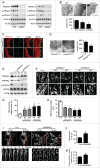

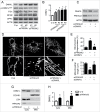
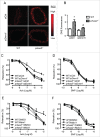

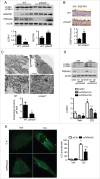

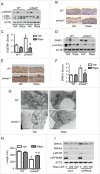

Similar articles
-
Dynamin 1-like-dependent mitochondrial fission initiates overactive mitophagy in the hepatotoxicity of cadmium.Autophagy. 2013 Nov 1;9(11):1780-800. doi: 10.4161/auto.25665. Epub 2013 Sep 4. Autophagy. 2013. PMID: 24121705
-
ARG2 impairs endothelial autophagy through regulation of MTOR and PRKAA/AMPK signaling in advanced atherosclerosis.Autophagy. 2014;10(12):2223-38. doi: 10.4161/15548627.2014.981789. Autophagy. 2014. PMID: 25484082 Free PMC article.
-
Dynamin-related protein 1 mediates low glucose-induced endothelial dysfunction in human arterioles.Am J Physiol Heart Circ Physiol. 2017 Mar 1;312(3):H515-H527. doi: 10.1152/ajpheart.00499.2016. Epub 2016 Dec 6. Am J Physiol Heart Circ Physiol. 2017. PMID: 27923790 Free PMC article.
-
How autophagy eats large mitochondria: Autophagosome formation coupled with mitochondrial fragmentation.Autophagy. 2017 May 4;13(5):980-981. doi: 10.1080/15548627.2017.1291113. Autophagy. 2017. PMID: 28521613 Free PMC article. Review.
-
A novel variant of DNM1L expanding the clinical phenotypic spectrum: a case report and literature review.BMC Pediatr. 2024 Feb 10;24(1):104. doi: 10.1186/s12887-023-04442-y. BMC Pediatr. 2024. PMID: 38341530 Free PMC article. Review.
Cited by
-
AMP-activated protein kinase protects against necroptosis via regulation of Keap1-PGAM5 complex.Int J Cardiol. 2018 May 15;259:153-162. doi: 10.1016/j.ijcard.2018.01.036. Int J Cardiol. 2018. PMID: 29579593 Free PMC article.
-
Luteinizing hormone regulates the phosphorylation and localization of the mitochondrial effector dynamin-related protein-1 (DRP1) and steroidogenesis in the bovine corpus luteum.FASEB J. 2020 Apr;34(4):5299-5316. doi: 10.1096/fj.201902958R. Epub 2020 Feb 20. FASEB J. 2020. PMID: 32077149 Free PMC article.
-
A High-Fat Diet Attenuates AMPK α1 in Adipocytes to Induce Exosome Shedding and Nonalcoholic Fatty Liver Development In Vivo.Diabetes. 2021 Feb;70(2):577-588. doi: 10.2337/db20-0146. Epub 2020 Dec 1. Diabetes. 2021. PMID: 33262120 Free PMC article.
-
Phosphorylation of INF2 by AMPK promotes mitochondrial fission and oncogenic function in endometrial cancer.Cell Death Dis. 2024 Jan 17;15(1):65. doi: 10.1038/s41419-024-06431-0. Cell Death Dis. 2024. PMID: 38233384 Free PMC article.
-
Purinergic P2 Receptors: Novel Mediators of Mechanotransduction.Front Pharmacol. 2021 May 7;12:671809. doi: 10.3389/fphar.2021.671809. eCollection 2021. Front Pharmacol. 2021. PMID: 34025431 Free PMC article. Review.
References
-
- Twig G, Hyde B, Shirihai OS. Mitochondrial fusion, fission and autophagy as a quality control axis: the bioenergetic view. Biochim Biophys Acta 2008; 1777:1092-7; PMID:18519024; http://dx.doi.org/10.1016/j.bbabio.2008.05.001 - DOI - PMC - PubMed
-
- Liesa M, Palacin M, Zorzano A. Mitochondrial dynamics in mammalian health and disease. Physiol Rev 2009; 89:799-845; PMID:19584314; http://dx.doi.org/10.1152/physrev.00030.2008 - DOI - PubMed
-
- Yu T, Robotham JL, Yoon Y. Increased production of reactive oxygen species in hyperglycemic conditions requires dynamic change of mitochondrial morphology. Proc Natl Acad Sci U S A 2006; 103:2653-8; PMID:16477035; http://dx.doi.org/10.1073/pnas.0511154103 - DOI - PMC - PubMed
-
- Burte F, Carelli V, Chinnery PF, Yu-Wai-Man P. Disturbed mitochondrial dynamics and neurodegenerative disorders. Nat Rev Neurol 2015; 11:11-24; PMID:25486875; http://dx.doi.org/10.1038/nrneurol.2014.228 - DOI - PubMed
-
- Shenouda SM, Widlansky ME, Chen K, Xu G, Holbrook M, Tabit CE, Hamburg NM, Frame AA, Caiano TL, Kluge MA, et al.. Altered mitochondrial dynamics contributes to endothelial dysfunction in diabetes mellitus. Circulation 2011; 124:444-53; PMID:21747057; http://dx.doi.org/10.1161/CIRCULATIONAHA.110.014506 - DOI - PMC - PubMed
MeSH terms
Substances
LinkOut - more resources
Full Text Sources
Other Literature Sources
Molecular Biology Databases
Research Materials
Miscellaneous
